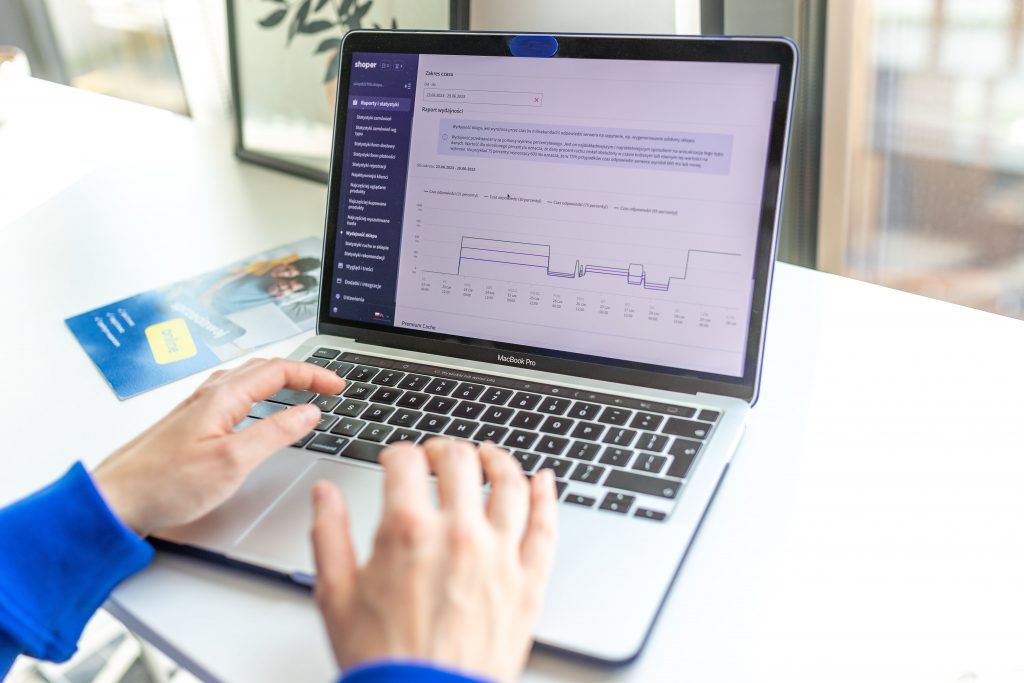In today’s fast-paced digital world, having a fast-loading Shopify store is crucial for the success of any online business. Studies have shown that the majority of online shoppers will abandon a website if it takes more than three seconds to load. This means that having a slow-loading Shopify store can result in a significant loss of potential customers and revenue.
A fast-loading Shopify store is important for several reasons. Firstly, it provides a better user experience for visitors, leading to higher customer satisfaction and retention. This, in turn, can increase the likelihood of turning visitors into paying customers. Additionally, a fast-loading store can improve search engine rankings, as site speed is a factor in SEO algorithms. This means that a faster Shopify store can lead to increased visibility and traffic from search engines.
Furthermore, a fast-loading Shopify store is essential in today’s competitive e-commerce market, where consumers have high expectations for website performance. By investing in optimizing the speed of your Shopify store, you can stay ahead of the competition and ensure that you are providing the best possible experience for your customers.
Ultimately, having a fast-loading Shopify store is crucial for maximizing sales, improving user experience, and staying competitive in the online marketplace. As such, it is important for online businesses to prioritize and invest in optimizing the speed of their Shopify stores.
Why Speed Matters
Slow loading times can have a significant impact on bounce rates and customer satisfaction. Research has shown that as page load times increase, so does the likelihood of visitors leaving a site. This leads to higher bounce rates and lower engagement, ultimately resulting in a negative impact on both user experience and conversions.
In addition, Google has placed a strong emphasis on site speed as a ranking factor. Faster loading times can lead to higher search engine rankings, increasing visibility and organic traffic to a website. This means that slow loading times not only affect user experience but also have implications for a website’s overall performance in search results.
Furthermore, in today’s fast-paced digital environment, customers expect websites to load quickly and efficiently. Slow loading times can lead to frustration and dissatisfaction, potentially driving customers to seek out alternative, faster-loading websites.
Understanding the Need for Optimization
Website speed is influenced by various factors such as server response time, website design, page content, and user’s internet connection. Server response time is crucial, as it determines how quickly the server can deliver the requested web page. This is influenced by the hosting provider, server location, and server optimizations.
Website design also plays a significant role in speed, as complex or heavy designs can slow down the website. Additionally, unoptimized images, videos, and other multimedia content can contribute to slower load times. The user’s internet connection also affects speed, especially for content-heavy websites.
In the context of a Shopify store, areas of improvement can include optimizing images and videos, using a content delivery network (CDN) to distribute content, implementing browser caching, and reducing the number of server requests. Streamlining the website design, minimizing unnecessary elements, and using efficient coding practices can also improve website speed.
Understanding the need for optimization in a Shopify store is essential for providing a seamless and efficient user experience, reducing bounce rates, and improving search engine rankings. By addressing these factors and implementing effective optimization strategies, Shopify store owners can ensure that their website loads quickly and provides a positive experience for visitors.
Factors Affecting Website Speed
When it comes to website speed, there are several factors that can significantly impact the performance of a website. One of the most crucial factors is choosing a reliable web hosting provider. The quality of the web hosting service can greatly influence the loading speed of a website. A reliable web hosting provider will ensure that the website is always accessible and that it loads quickly, providing a seamless user experience.
In addition to selecting a trustworthy web hosting provider, optimizing images and files is another important factor in improving website speed. By reducing the size of images and files, websites can load faster, resulting in a better user experience. Furthermore, minimizing HTTP requests and reducing website code can also help to improve loading times. By streamlining the website code and minimizing the number of HTTP requests, the website can load more efficiently.
Lastly, implementing caching techniques can have a significant impact on website performance. Caching stores frequently accessed data in a temporary storage area, allowing the website to load faster and reducing the strain on the server.
Shopify-Specific Strategies for Speed Optimization
When it comes to optimizing the speed of your Shopify store, there are specific strategies you can implement to ensure a smooth and efficient user experience.
First, you should utilize a lightweight and optimized theme for your store. Look for a theme that is designed for speed and performance, with minimal code and fast-loading design elements.
Next, consider installing and configuring performance-enhancing apps. There are a variety of apps available in the Shopify app store that can help improve your store’s speed and performance, such as caching apps, image optimization apps, and code minification apps.
Implementing lazy loading for images and content can also greatly improve your store’s speed. Lazy loading defers the loading of non-essential elements until they are needed, which can significantly reduce initial page load times.
Additionally, take the time to review and remove any unnecessary or outdated Shopify apps and plugins. These can add unnecessary bloat to your store and slow down its performance.
By following these Shopify-specific strategies for speed optimization, you can ensure that your store is fast, responsive, and provides a seamless shopping experience for your customers.
Google’s Perspective on Website Speed
Google’s Core Web Vitals are a set of specific factors that Google considers important in determining the overall user experience of a website. These factors include loading speed, interactivity, and visual stability. Google uses these metrics to evaluate how fast and responsive a website is, and it has a direct impact on the website’s search rankings.
Google measures website speed through tools like Lighthouse, PageSpeed Insights, and Chrome User Experience Report. These tools analyze various aspects of a website’s performance, such as load time, first input delay, and cumulative layout shift. Google uses these measurements to assess the website’s overall user experience and to determine its ranking in search results.
Optimizing website speed is crucial for becoming Google’s preferred choice. Websites that load quickly and provide a smooth user experience are more likely to rank higher in search results. Google prioritizes websites that offer a positive user experience, as this aligns with its goal of providing valuable and relevant search results to users.
Best Practices for Speed Optimization and SEO
To optimize website speed, it’s crucial to utilize various tools and resources that analyze and improve loading times. Tools like Google’s PageSpeed Insights provide valuable insights into areas for improvement, such as minimizing server response time, leveraging browser caching, and optimizing images. Implementing recommended coding practices, such as minimizing HTTP requests, reducing server response time, and minifying CSS and JavaScript, are essential for faster loading times.
In addition to desktop optimization, mobile website speed is equally important. Strategies for optimizing mobile website speed include minimizing redirects, leveraging browser caching, and optimizing images for mobile devices. It’s also important to ensure that the website is responsive and mobile-friendly, as this can significantly impact loading times on mobile devices.
Furthermore, monitoring and regularly optimizing website speed and performance are critical. Using tools like Google Analytics can provide valuable data on loading times and website performance, allowing for ongoing optimization and improvement.
By implementing these best practices for speed optimization and SEO, website owners can ensure that their websites are optimized for speed, providing a better user experience and potentially improving search engine rankings.

Conclusion
In the competitive world of e-commerce, speed optimization for your Shopify store is crucial. Prioritizing speed can significantly improve user experience by reducing loading times, increasing customer satisfaction, and ultimately boosting conversions. Additionally, having a lightning-fast store is also beneficial for SEO, as search engines like Google favor fast-loading websites, resulting in higher rankings and visibility for your store. By focusing on speed optimization for your Shopify store, you not only provide a better experience for your customers but also gain a competitive advantage in the online market. So, take the time to prioritize speed and make sure your store is running as fast as possible – your customers and your shopify SEO rankings will thank you for it.

